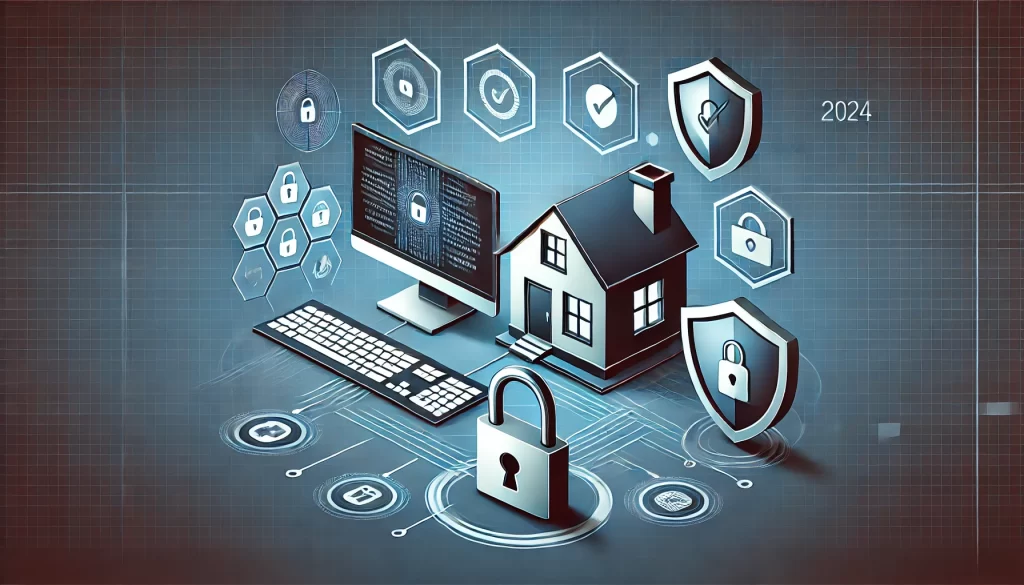
Cyber threats are increasingly sophisticated and widespread in 2024, posing significant risks to home computer users. Understanding these threats and implementing robust cybersecurity measures is crucial. Here’s an overview of common cyber threats and how to protect against them.
Table of Contents
| Key Takeaway | Description |
|---|---|
| Cyber Threats | Be aware of phishing, malware, ransomware, social engineering, and password attacks. |
| Strong Passwords | Use long, complex passwords with letters, numbers, and special characters. |
| Regular Updates | Keep your software and firmware up-to-date. |
| Antivirus & Firewall | Install antivirus software and enable your firewall. |
| Safe Browsing | Avoid suspicious websites and email attachments. |
| Data Protection | Back up data and use encryption. |
| Education | Stay informed about cyber threats and best practices. |
| MFA | Enable multi-factor authentication. |
Understanding Cyber Threats
There are many types of cyber threats, but here’s an overview of some common ones and how to protect against them.
Social Engineering
Social engineering is one of the most common and easiest forms of attack, making up 75% of detected identity attacks in 2023. It involves manipulating individuals into divulging confidential information through techniques like pretexting, baiting, tailgating, and guessing a password. Be skeptical of unsolicited requests for sensitive information.
Human Error
Human error remains a significant threat, with 99% of data breaches predicted to be caused by misconfiguration of settings or installation by an end user by 2025. Follow best practices for configuration and installation.
Password Attacks
Password attacks aim to obtain users’ passwords through various means, such as brute force attacks or credential stuffing. Use long, complex passwords with letters, capital letters, special characters, and numbers. Enable multi-factor authentication (MFA).
Watch this video to learn more about passwords.
Phishing
Phishing attacks continue to be the most prevalent email attack method, with 96% of phishing attacks delivered via email. Be cautious with emails from unknown senders and avoid clicking on suspicious links or downloading attachments.
Malware
Malware attacks are widespread, with 5.4 billion malware attacks globally in 2022. Install and regularly update antivirus software. Avoid downloading software from untrusted sources.
Ransomware
Ransomware locks users out of their systems or data until a ransom is paid. Regularly back up data to offline storage and avoid opening email attachments from unknown sources.
IoT Security
IoT devices are increasingly vulnerable to attacks, with 70% of organizations having users served malware ads on their browsers. Change default passwords on IoT devices and keep device firmware updated.
Generative AI
Generative AI is expected to be used for cyber activities in 2024, posing new challenges for cybersecurity. Monitor AI-generated content for suspicious activity.
Best Practices for Home Computer Security
To enhance your home computer’s security, consider the following practices:
Keep Your Operating System and Software Updated
Ensure your operating system (Windows, macOS, or Linux) is updated regularly. This includes installing the latest security patches and updates to prevent exploitation of known vulnerabilities.
- For macOS, enable automatic updates by going to System Settings > Software Update and switching on Automatic Updates.
- For Windows, go to Settings > Update & Security > Windows Update and ensure the system is set to automatically download and install updates.
Install Reliable Antivirus Software

Install antivirus software specifically designed for your operating system. For example, Intego is recommended for macOS, and Windows Defender is built-in for Windows.
Ensure the antivirus software includes features such as ransomware protection, spyware detection, and keylogger protection.
Use a Firewall
Enable the firewall on your operating system to block unauthorized network traffic.
- For Windows, go to Settings > Update & Security > Windows Defender Firewall.
- For macOS, go to System Preferences > Security & Privacy > Firewall.
Implement Strong Password Hygiene
Use unique, strong passwords for all accounts. Consider using a password manager to securely store and generate complex passwords. Avoid using personal information or common words as passwords.
Network Security
Securing your home network is vital:
- Change Default Router Settings: Modify default usernames and passwords to prevent unauthorized access.
- Use Strong Encryption: Enable WPA3 encryption on your Wi-Fi to protect data transmission.
- Regularly Update Router Firmware: Ensure your router firmware is up-to-date to fix security flaws.
Safe Browsing and Email Practices
Exercise caution while browsing and handling emails:
- Avoid Suspicious Websites: Do not visit untrusted websites that may host malicious content.
- Be Cautious with Email Attachments: Do not open attachments from unknown or unexpected sources.
- Use reputable antivirus software to scan downloaded files and attachments.
Data Protection
Protecting your data is crucial:
- Regular Backups: Regularly back up important data to an external drive or cloud storage.
- Use Encryption: Encrypt sensitive information to prevent unauthorized access if your device is compromised.
Monitor Your System
Regularly check your system for updates and install them as soon as they become available. Monitor your system for suspicious activity and report any issues to the relevant authorities.
Educate Yourself
This is the most important one because if you don’t have any ideas of how someone might be attacked online, it’s a problem.
Educate yourself and your family by taking beginner courses on how to protect your identity online, understanding the latest cyber threats, and learning best practices through reputable sources such as Safety Detectives, Security.org, and NIST.gov. Continuously update your knowledge to stay ahead of evolving cyber threats.
Watch this video to learn the importance of protecting your identity online.
Implement Multi-Factor Authentication
Enable multi-factor authentication (MFA) for all accounts that support it. This adds an extra layer of security by requiring additional verification beyond just a password.
Conclusion
Staying vigilant and continuously updating your cybersecurity practices is essential. By understanding the threats and implementing best practices, you can significantly reduce the risk of cyber attacks on your home computer.
For more tips on home security, you might find this article on the best home security systems very useful.